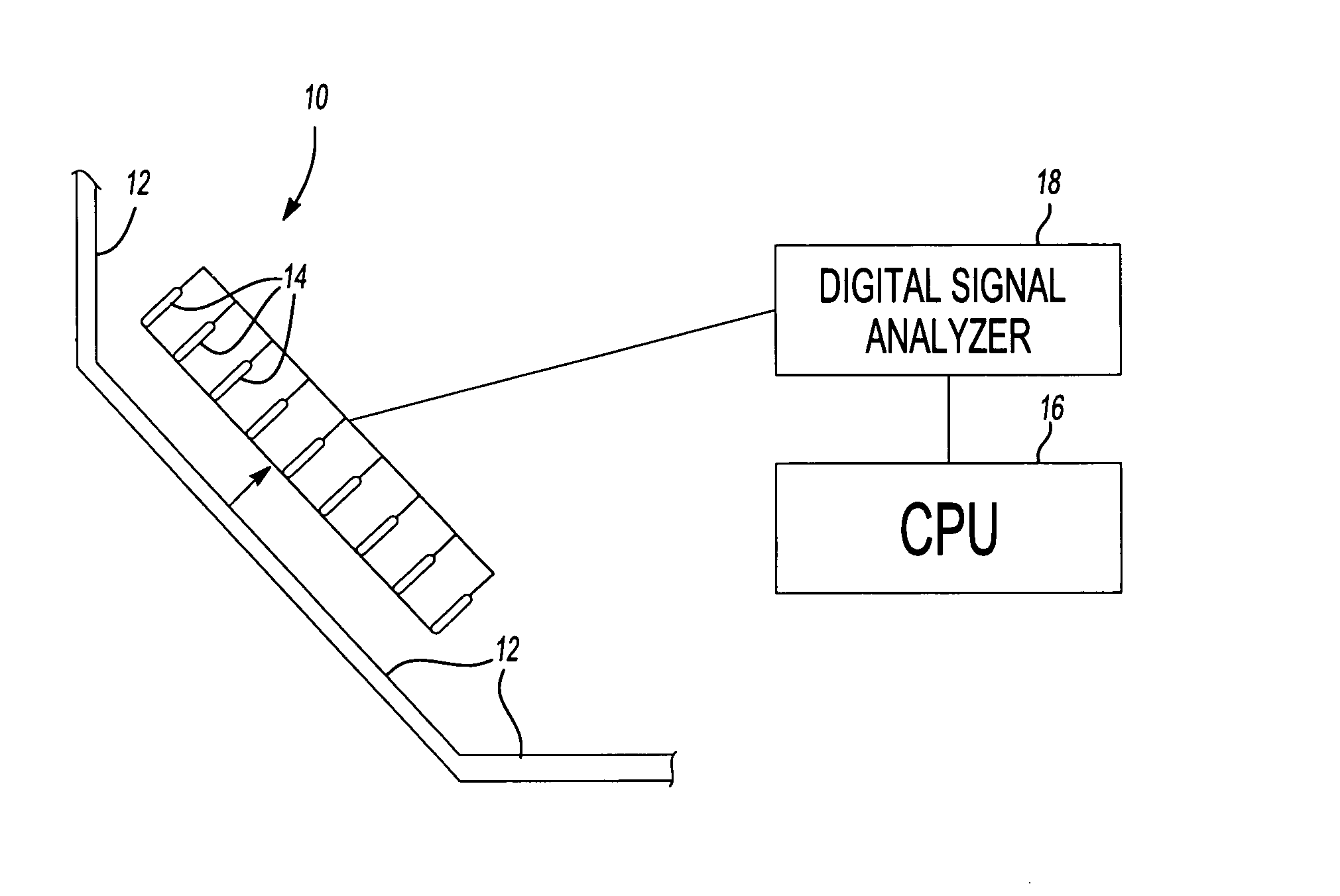Panel acoustic contributions examination
a panel and acoustic technology, applied in the direction of instruments, electrical transducers, transducer casings/cabinets/supports, etc., can solve the problems of inability to predict the interior noise of vehicles in an analytical manner, inability to reduce vehicle noise in a cost-effective manner, and high labor intensity and time consumption. achieve the effect of cost-effectiv
- Summary
- Abstract
- Description
- Claims
- Application Information
AI Technical Summary
Benefits of technology
Problems solved by technology
Method used
Image
Examples
Embodiment Construction
[0009] Referring to FIG. 1, the present invention provides a method and system 10 for analyzing the contribution noise from a plurality of panels 12. The system 10 includes a plurality of transducers 14, such as microphones, lasers, or the like, connected to a computer 16 via a sonic digitizer or digital signal analyzer 18. The computer 16 is programmed to perform the functions described herein, including the algorithms described below. The computer 16 includes a processor, memory, storage, display, input and output devices and any other necessary hardware. The transducers 16 are arranged in an array near at least one of the panels 12.
[0010] The previous methodology, such as TPA, utilizes the superposition principle, is valid for a linear, time-invariant system, and assumes that individual path contributions to the acoustic pressure pmnl(ω) at a field point m due to an excitation force Fnl(ω) acting on the structure at point n in the ith direction can be written as
pmnl(ω)=HmnlF(ω)×...
PUM
 Login to View More
Login to View More Abstract
Description
Claims
Application Information
 Login to View More
Login to View More - R&D
- Intellectual Property
- Life Sciences
- Materials
- Tech Scout
- Unparalleled Data Quality
- Higher Quality Content
- 60% Fewer Hallucinations
Browse by: Latest US Patents, China's latest patents, Technical Efficacy Thesaurus, Application Domain, Technology Topic, Popular Technical Reports.
© 2025 PatSnap. All rights reserved.Legal|Privacy policy|Modern Slavery Act Transparency Statement|Sitemap|About US| Contact US: help@patsnap.com



